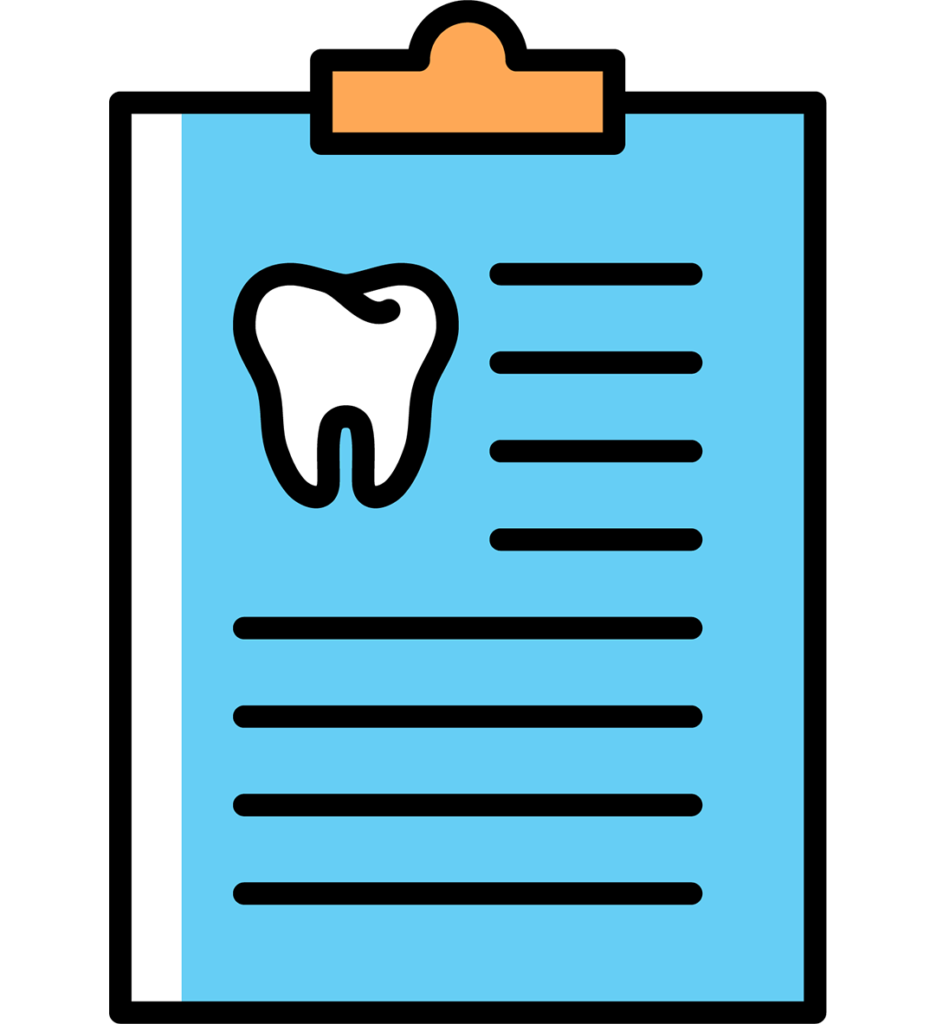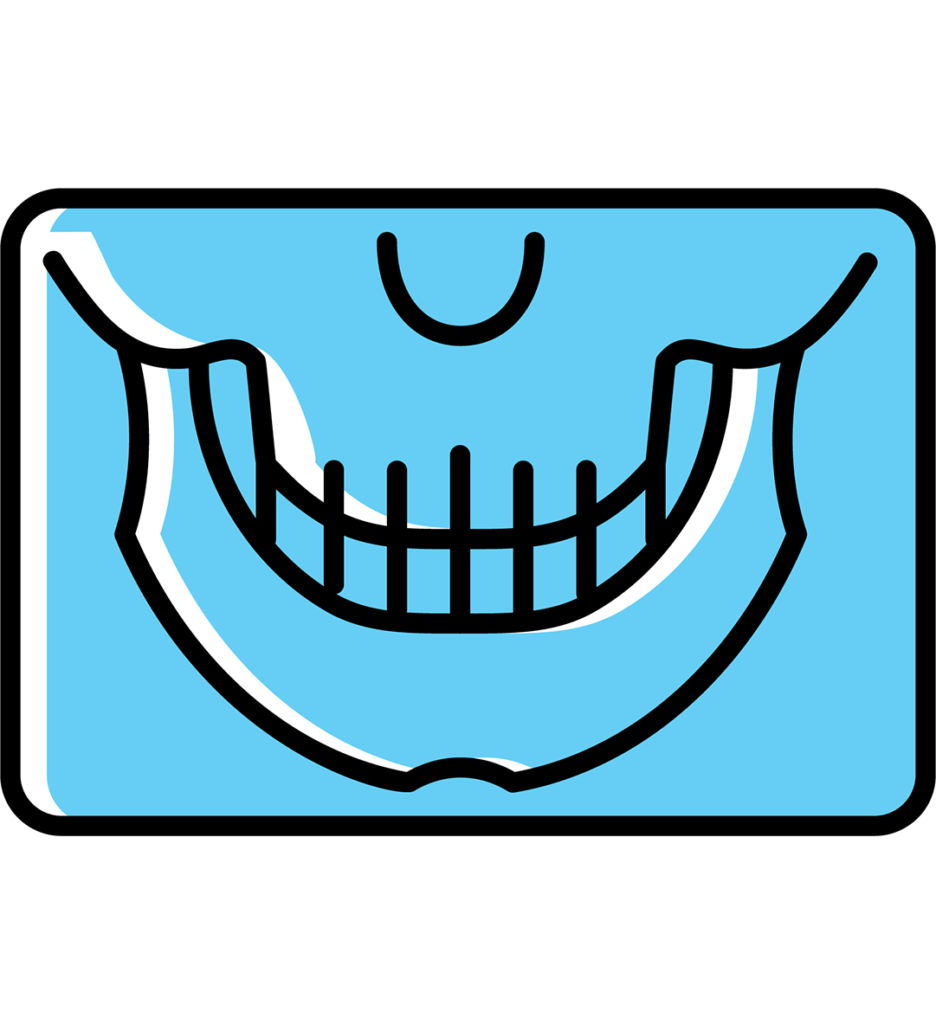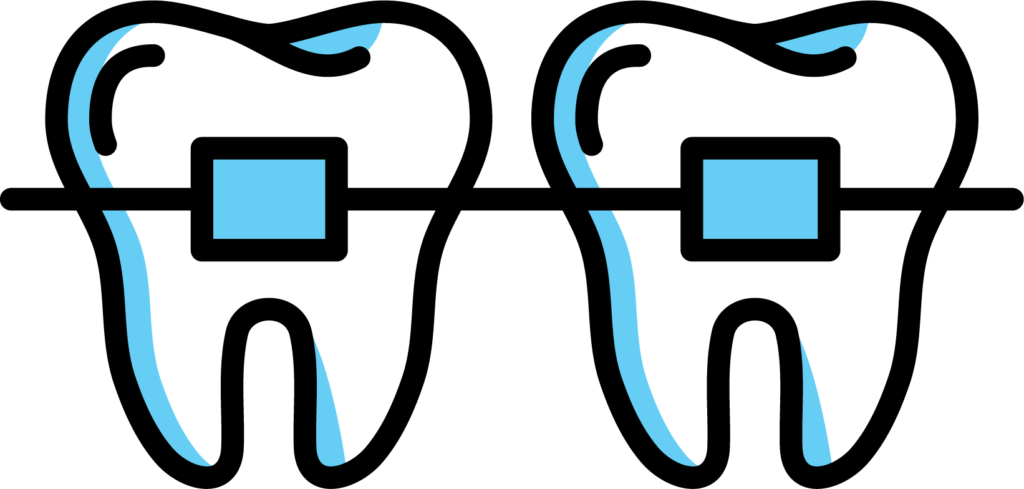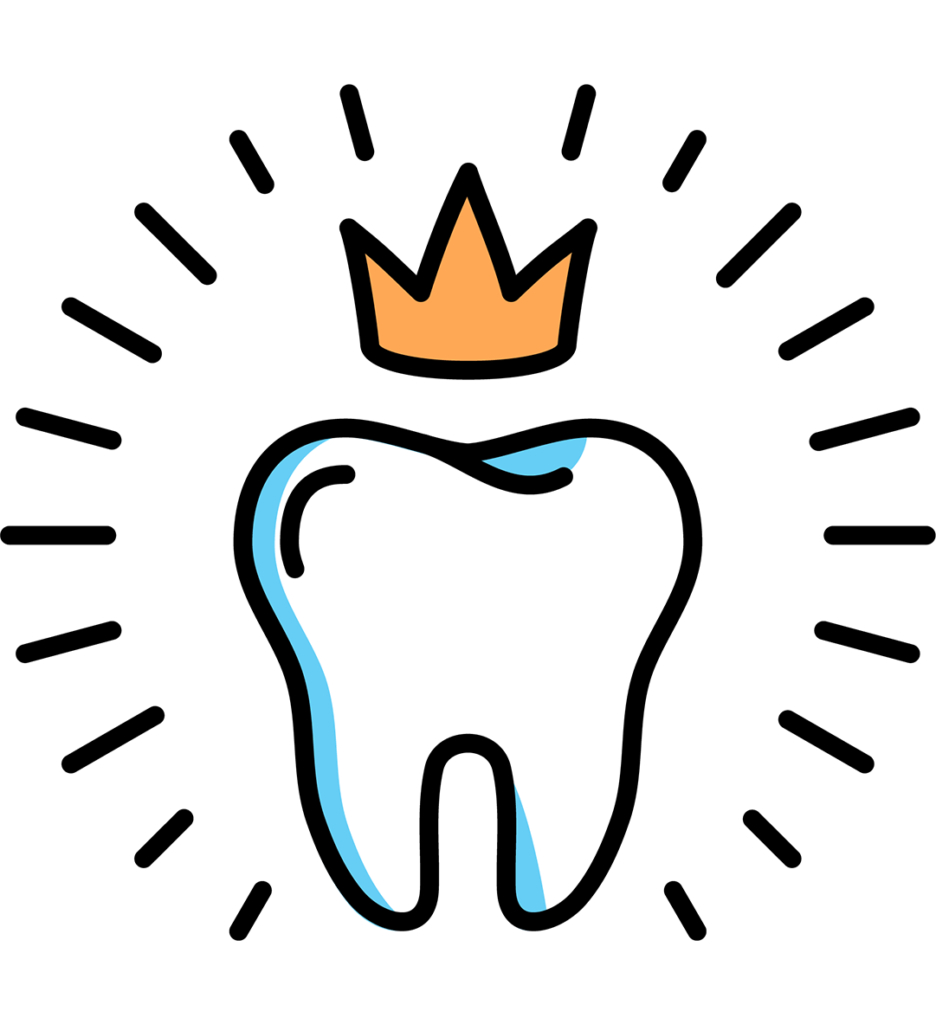Growing doesn’t stop at childhood – teens experience important and rapid growth in their faces and jaws. Teens are also getting the last of their permanent teeth, and teeth that have just come through the gums are especially vulnerable to decay.
As your child transitions into their teen years, their oral well-being is largely influenced by activities at home, school, sports and social events. Cavities are also more common in teens than any other time in their life due to increasing freedom — leading to unhealthy diet choices and a lack of brushing. Adolescence is also a time of increasing self-awareness, especially when it comes to your child’s appearance. During this stage, children will notice if they have crooked teeth or if their teeth are discolored.
Here at Middletown Pediatric Dental, we introduce your children to the world of dentistry with a friendly, patient and comfortable approach. We understand that every child has unique needs and our treatment recommendations are customized for the child, their age, dental needs, and parental preferences alike. As your child grow into their teen years, our team at Middletown Pediatric Dental is here to help consult, treat and protect your child’s growing smiles.
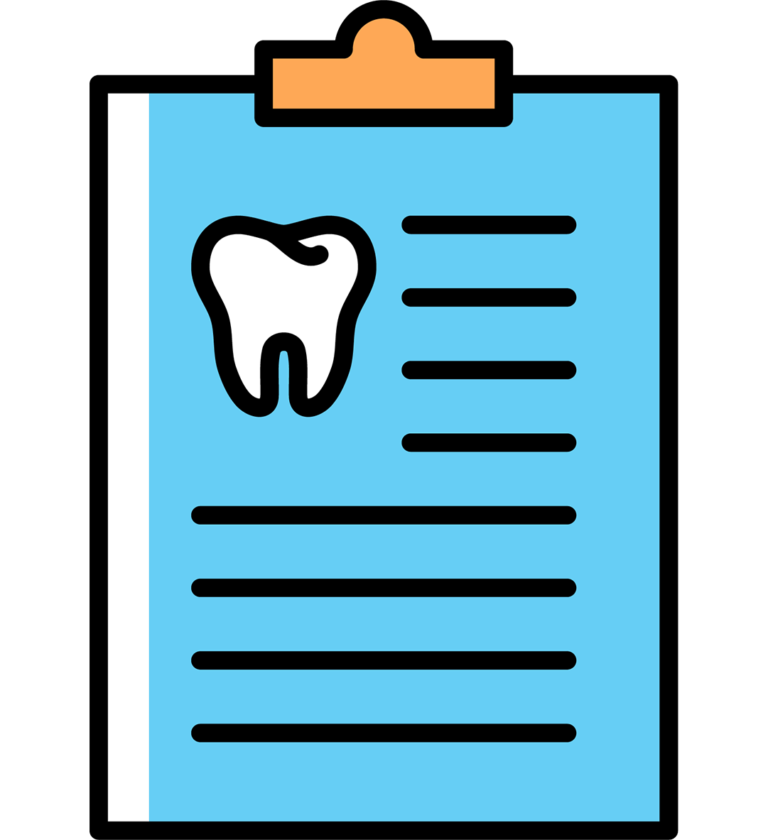
Routine Care Treatment
Checking, Prevention and Early Intervention
Bringing your child to the dentist early and regularly will foster proper oral care routine that can last a lifetime. Routine checkups every six months help prevent cavities and tooth decay, which can lead to pain, trouble concentrating and other medical issues. Children with healthy teeth are able to chew food easily, learn to speak clearly, and smile with confidence.
During routine appointments, our dentists will make sure that your child’s teeth and gums are healthy. If any treatment is necessary, you can be rest assured that we will take a conservative approach and recommend options for your child similar to what we would do for our own.
What to expect:
Your child will be given a thorough dental examination in one of our treatment chairs. Your child can relax and watch a movie of their choice during their dental cleaning, which also includes a thorough flossing and application of a fluoride varnish to help maintain strong and healthy teeth and gums. Parents will receive important information pertaining to nutrition and the prevention of childhood dental caries (tooth decay and/or cavities).
Last but not least, here at Middletown Pediatric Dental, we aim to make your child’s appointments both fun and informative!

Preventive Care Treatment
Protect and Shield
The American Academy of Pediatric Dentistry (AAPD) recommends sealants as an effective method for cavity prevention. This preventive measure is a coating that our dentists will apply onto your child’s teeth to provide a long-lasting extra protection from decay. Dental sealant treatments are simple*, painless and non-invasive and create a barrier into the tiny grooves where cavity-causing bacteria live. Toothbrush bristles are too large to reach into the grooves, making sealant application one of the most important preventive treatments available.
Children are prone to cavities due to sugar consumption and improper brushing techniques and dental sealants add an extra layer of protection to keep your children’s teeth healthy. In addition, sealants are one of the most cost-effective means of preventing cavities – they cost less than half of what one filling costs!
*Note to parents: Sealants are simple procedures and takes about 10-15 minutes in which your child can eat before and after.
Strengthen Tooth Enamel
Flouride is a naturally occurring mineral that has the unique ability to strengthen tooth enamel, prevent cavities and even reverse decay at its earliest stages. Our dentists can apply a safe and protective fluoride varnish to your young children’s teeth.
Better Safe than Sorry
The American Dental Association (ADA) estimates that young athletes without mouth guards are 60 times more likely to suffer dental injury and trauma than those who do. Mouth guards are sometimes required in school-based sports such as football, ice hockey, lacrosse and hockey. The ADA recommends the use of mouth guards in other sports and activities. Besides protection from dental related trauma and injuries, recent studies suggest that mouth guards can help prevent concussions and neck injuries.
Pediatric dentists estimate that over 25% of dental injuries occur while playing sports, with the majority of those involving the top front teeth.
Custom mouth guards will be tailor made to your child’s teeth, making them more comfortable and are constructed of higher quality given that the tighter fit will provide the coverage and protection your child needs.

Restorative Care Treatment
If cavities and toothaches are disturbing your child, our team at Middletown Pediatric Dental is here to help and consult. We offer a range of treatment options to remove the decay, treat and protect your child’s smile.
Early Intervention
Unfortunately cavities are a common problem and at least 20% of children aged 5 to 11 years have at least one untreated cavity. Here at Middletown Pediatric Dental, our dentists will remove the decay, clean the affected area, and use a composite filling to protect the tooth’s structure and restore its form and function. It is a painless procedure and the filling materials that we use here are high quality, BPA-free, non-toxic and safe.
Intervention and Restoration
Unfortunately, there are times when a cavity gets big, so big it spreads into the nerve of the tooth or eats away at a lot of the tooth. In these circumstances, we need to provide a strong long-lasting solution. A pediatric crown is a restoration that covers or “caps” a tooth, restoring it to normal size and shape while strengthening and protecting it from further cracking, decay, or breakage. Tooth crowns are necessary when a tooth is broken down to the point where a filling won’t be effective, or following a pediatric root canal, wherein part of the baby tooth’s nerve has been removed due to the extent of the cavity. These are simple, routine procedures, done in a single quick visit!
Pediatric crowns can vary from stainless steel to zirconia. The crown will eventually fall off with the baby tooth when it is time to exfoliate. We offer both stainless steel and white tooth-colored crowns at Middletown Pediatric Dental. Stainless steel crowns are slightly more conservative, and rarely experience problems. However, the biggest drawback of stainless steel crowns is their metallic color. They are ideal for a child’s rear teeth that are not visible, but if a crown is necessary for a tooth that will show, they can be done in white per the parent’s preference. White crowns are made of zirconia and are close in color to the natural teeth, so they are far more cosmetically pleasing. They tend to hold up very well, however are not quite as resilient as stainless steel crowns, and may fracture, dislodge, or discolor with time, and ultimately require
Non-invasive alternative
Approved by the FDA, this revolutionary modality stops the decay process and kills the “sugar bug” germs. SDF is a clear antimicrobial liquid applied using a tiny brush over the course of one to two visits. It is applied to the area of decay, arresting the cavity and strengthening the tooth in a fast, painless and non-invasive manner. One thing some view as a downside is the color change. The SDF stains the decay a black color. This can always be replaced with a white, aesthetic colored filling in the future.
SDF offers an alternative path for young, fearful, or pre-cooperative children for whom treatment is not possible, often preventing the need for sedation, local anesthesia, fillings, and crowns. There are also applications for adolescents and adults in select situations. Please ask our dentists if you have any questions about SDF.
Repairing Damaged Tooth
Young children can easily chip or crack their teeth while playing sports or games. Repairing the tooth as soon as possible will help to restore its natural strength and its overall size and shape, so your child’s smile will look as good as new. Dental Bonding is a minimally invasive procedure and an excellent solution. It can be used to improve the appearance of teeth that are chipped or cracked – and even teeth that are slightly misaligned or discolored.
The bonding process is simple and can be completed during a single visit. Composite resin — the same material used to invisibly fill cavities in teeth — is commonly used in bonding. Composite resin is also able to bond very strongly with the natural tooth, adding strength to the tooth and creating a restoration that works in harmony with your child’s teeth. Our skilled team at our office is available to answer questions you may have regarding bonding or any other procedure.
Gently Removing Damaged Teeth
There are several reasons a child may need a tooth removed. Sometimes this is due to overcrowding, ectopic eruption (a permanent tooth erupting behind / beside a baby tooth), or maybe your child had an accident that damaged a tooth beyond repair. Other times a tooth may have an infection, or too much decay to be able to save it. A tooth extraction is nothing to fret over! We see that everyone who walks through our door as an extension of our family, and we will always treat your child as if they were our own. We are committed to gentle, comfortable and stress-free dental care.
Holding up the fort
Baby teeth remain in the mouth until a permanent tooth erupts from underneath its position and replaces it. When a baby tooth is lost early, a space maintainer is highly recommended to prevent space loss and future dental problems. Without a space maintainer, the adjacent teeth often shift or tilt into the empty space causing future permanent teeth to come in crooked or misaligned, which will take more time and money to treat. The maintainers are small and unobtrusive and most children adjust well to them within a few days.
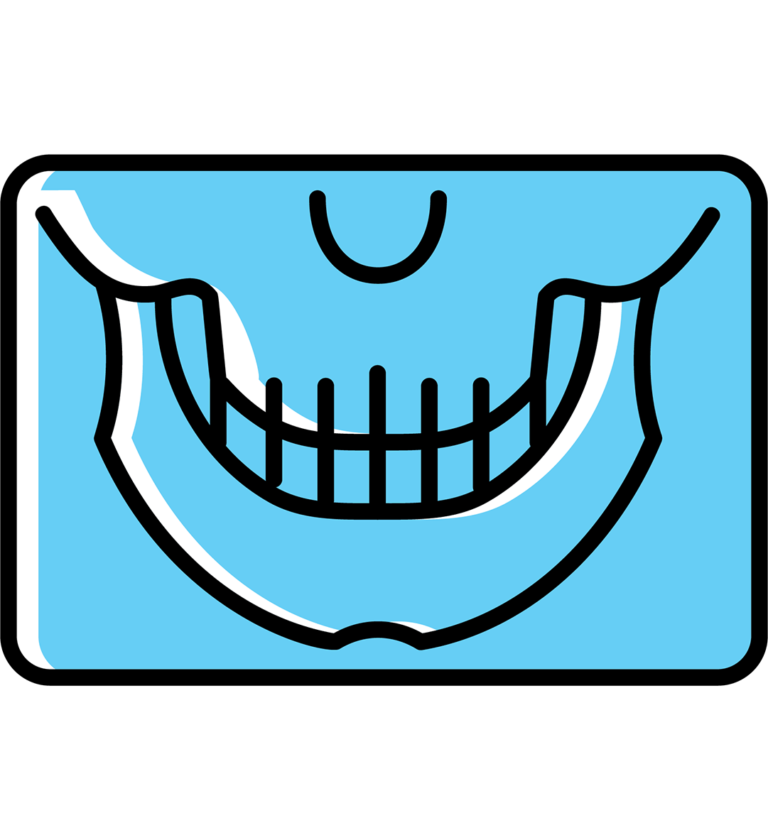
Comprehensive Orthodontics
At Middletown Pediatric Dental, all patients are screened for orthondontic needs at age 7 and periodically as they grow up. This is because there are certain dentoskeletal (teeth and face) functional and developmental issues that are best treated in childhood, typically around 7-9 years old. Furthermore, the American Association of Orthodontists has recommended that the proper age for a child’s first visit to the orthodontist is no later than seven years of age.
Comprehensive orthodontics typically begins between the ages of 10-13, which is when all of the baby teeth are typically lost and the adult teeth have grown in. The goal of comprehensive orthodontics is to achieve alignment of the teeth and bite correction, creating harmony between the lips, cheek, tongue and teeth. Improving positioning of the bite helps prevent accelerated tooth wear from functional interferences and helps maintain healthy TMJ (jaw) joint. When teeth are misaligned (upper and lower jaw may not meet properly), crowded, lost or missing they make it difficult for teens to keep clean. Other problems can occur, such as gum disease, complications with speech and chewing, tooth decay, abnormal wear of tooth enamel and jaw problems.
At Middletown Pediatric Dental, our team is specialized to help evaluate, prevent, detect and treat orthodontic issues such as overbites, underbites and crossbites, crowding, spacing, impactions and more. Comprehensive orthodontics can be many things. It can be metal braces, ceramic braces, lingual (inside) braces or clear aligners.
At your child’s first visit to Middletown Pediatric Dental, we will complete a thorough examination of your child’s teeth, jaws and face to assess if further individualized treatment is needed.
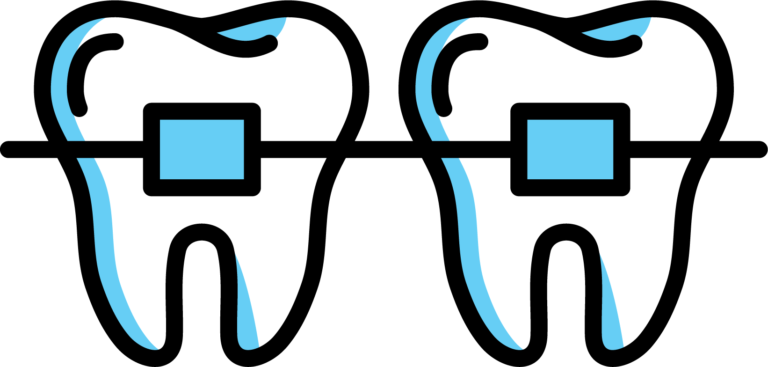
Braces and Retainers

As your teenager grows up, their body is growing and developing rapidly and their teeth is shifting as part of the process. Tooth shifting as the human body grows is a common development and there are multiple options available to address your child’s unique needs and preferences.
Our practice offers a variety of braces, types and styles, to choose from below. During your child’s orthodontic treatment, which can last from 30 minutes to 6 months (depending on age, severity and degree of movement), your child will wear braces and will visit us for scheduled adjustments.
Traditional metal braces are the most common type of braces and are more comfortable today than ever before. Made of high-grade stainless steel, metal braces straighten your teeth using metal brackets and archwires. With metal braces, you have the option of adding colored elastic (rubber bands) for a more unique and colourful smile.
Lingual braces, sometimes called “braces behind the teeth”, are a common alternative to traditional braces. Like traditional braces, they are used by an orthodontist to help realign and straighten teeth. The difference is that the braces are glued to the back of your teeth instead of the front, making them less noticeable. Lingual braces can sometimes make parts of your child’s mouth and tongue sore, especially during the first two weeks or after a tightening. Furthermore, lingual braces are harder and longer to work with making appointments a little longer. As such, these braces are usually recommended for older children and teens who can better stand the long appointments and “adjustment time”
The other major alternative when it comes to less noticeable braces are ceramic braces. Ceramic braces are made of clear materials and are therefore less visible on your teeth than metal braces. For this reason, ceramic braces are used mainly on older teenagers and adult patients who have cosmetic concerns. While they are visually less prominent, they do require more attention to oral hygiene as ceramic braces are larger and are more brittle than their metal counterparts. For these reasons, ceramic braces tend to be used more on upper front teeth than on lower teeth.
Clear aligners are a series of invisible, removable, and comfortable acrylic trays that straighten your teeth like braces. Not only are the aligners invisible, they are removable, so you can eat and drink what you want while in treatment, plus brushing and flossing are less of a hassle. The aligners are comfortable and have no metal to cause mouth abrasions during treatment.
Our Middletown NJ dental office provides Invisalign to our patients. Invisalign is a unique state-of-the art orthodontic therapy that straightens teeth without the use of metal brackets or wires. Instead, Invisalign uses a series of plastic alignment trays similar in appearance to a clear retainer. These trays slowly move the teeth into the desired position and are replaced with a new set of trays once a week. Some benefits of Invisalign are:
- Invisible braces: Invisalign allows teens to straighten their teeth in a manner that is essentially invisible to people around them.
- Reduce gum disease: Teeth that are crowded and misaligned are more difficult to keep clean and are at an increased risk for tooth decay and gum disease.
- Improve the appearance of your smile and self-esteem
- Convenient way to straighten your teeth without metal braces: While traditional braces are difficult to keep clean and have special diet restrictions, Invisalign braces do not. Simply remove your child’s alignment trays, then brush and floss as normal. The trays are easy to keep clean with your toothbrush and tap water. During meals simply remove the trays and eat whatever you like.
Invisalign braces are one of the most comfortable orthodontic treatments available. Please call us today for an Invisalign consultation!
Braces / Retainer Care
Life during orthodontic treatment will include periodic visits to see us, possibly some minor changes to diet for the duration of the treatment, and more frequent toothbrushing along with daily flossing.
The American Association of Orthodontists provides the following guidelines during the time of your child’s orthodontic treatment with us:
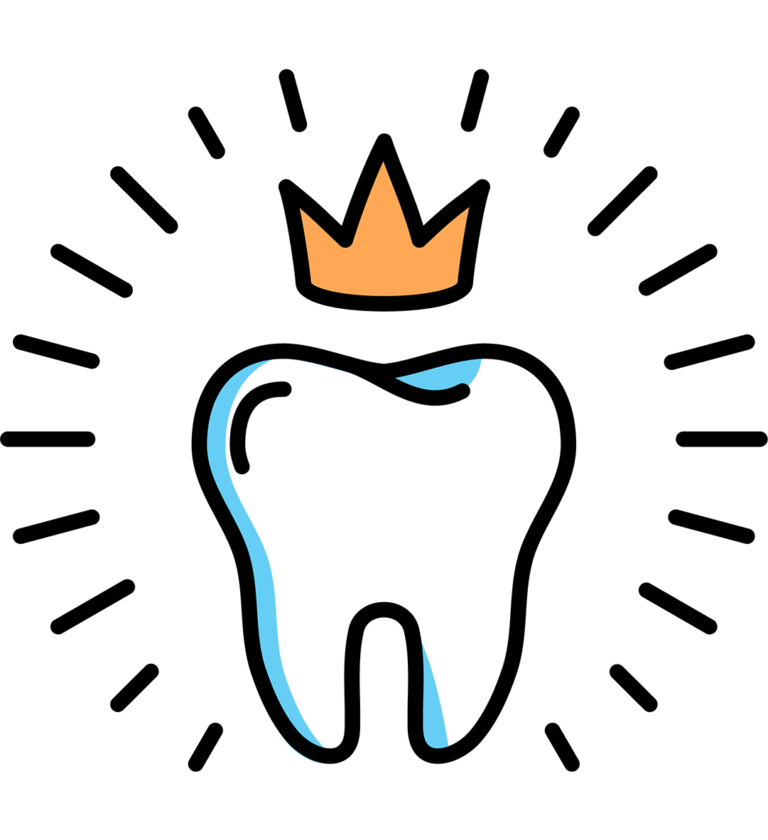
Adolescent Dental Care Treatment
Early intervention of TMJ through evaluation and mouth guards
Teeth grinding is a serious issue, especially in teenagers and young adults. You should bring up this issue to your pediatric dentist at Middletown Pediatric Dental, because grinding can lead to problems with the temporomandibular joint (TMJ) later on. The stress can cause pain and soreness. In order to remedy the situation, we may prescribe a special custom-made mouth guard.
Evaluation and potential extraction
Wisdom teeth are the third molars and they typically grow in between ages 16-21. Most children do not have room in their jaws for their wisdom teeth. Therefore, they grow in sideways or are impacted and need to have them taken out. Often we will recommend removing wisdom teeth before they become a problem. In addition to impaction, there are several reasons for consideration for wisdom teeth to be removed:
- Inflammation and infection
- Crowding due to lack of space, leading to damage to nearby teeth and making it more difficult to keep clean
- Cysts or tumors may develop
- TMJ pain
Our office at Middletown Pediatric Dental will first evaluate the position of your child’s emerging wisdom teeth and conservatively determine whether they need to be removed. If extraction is necessary, wisdom teeth can be removed by our specialists using local anesthesia, nitrous oxide, intravenous sedation, or general anesthesia. The procedure usually takes 30-60 minutes.
Whitening
Many teens desire to improve the aesthetics of their teeth by using tooth-whitening and stain-removal products. However, children may experience sensitivity as a result of the overuse of whitening products. Once your child has his or her permanent set of teeth, OTC strips are a good option, though it takes a few weeks to see results. Overnight trays and in-office procedures are also effective. Whichever technique is chosen, have your child brush his or her teeth with desensitizing toothpaste for two weeks before, so his or her teeth won’t sting or throb.
Intervention
Bad Breadth: Bad breath is a concern for most teenagers. Good oral hygiene practices that include regular brushing and flossing will help. Brushing the tongue is also important, as plaque can coat the surface of the tongue and contribute to bad breath. Beyond good oral hygiene practices, if bad breath still persists, consult with us to rule out any underlying issues. Asthma, sinus and throat infections can also contribute to bad breath.
Hormonal Related Gingivitis: Puberty is a complex time that brings many hormonal changes which may lead to gingivitis – symptoms may include gingival bleeding and gum sensitivity. Gingivitis is reversible with proper brushing, flossing and the use of an antimicrobial mouth rinse. However, gingivitis, if left unchecked, can progress into a more serious gum infection called periodontitis, or periodontal disease. In periodontal disease, the infection goes deep into the tooth, the gums and the bones surrounding the teeth. Again, it can be diagnosed and treated effectively if caught early, but it’s important to make sure that symptoms are not ignored.


